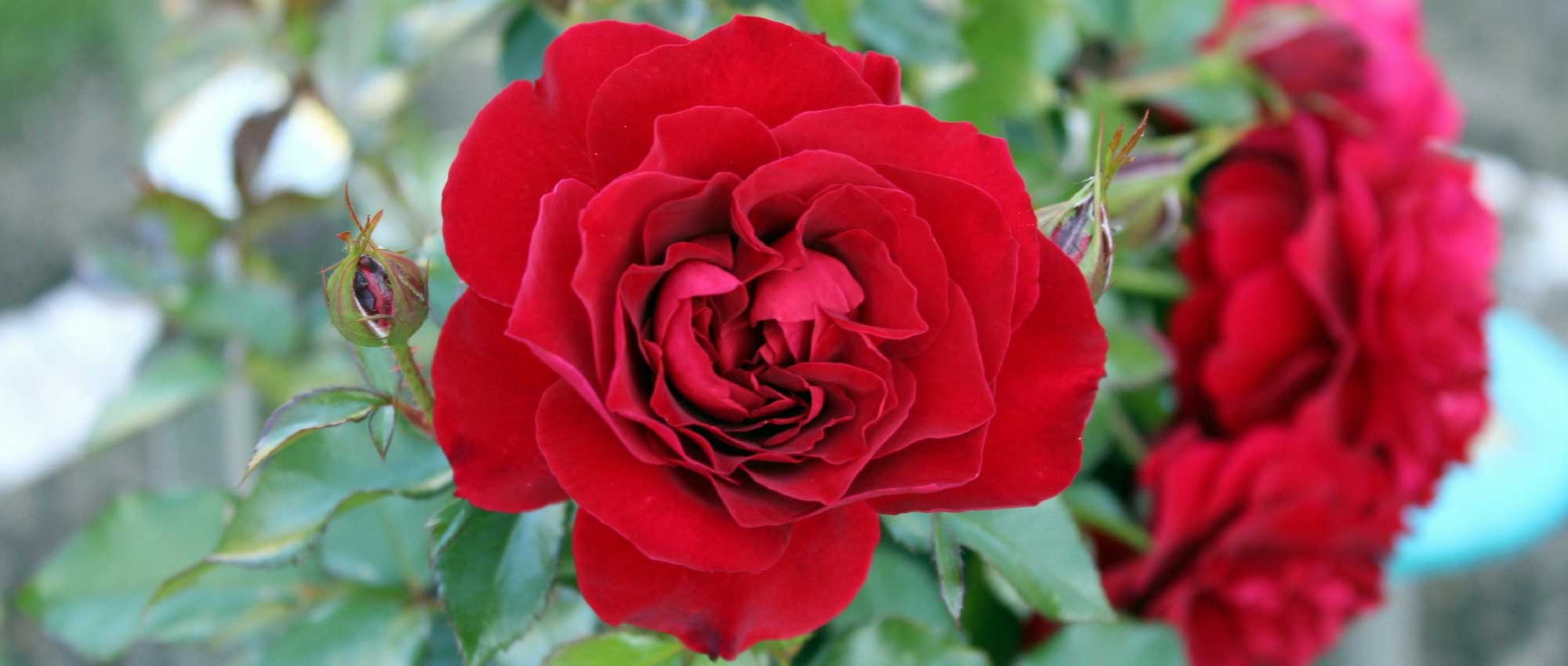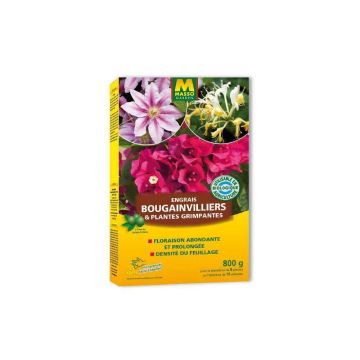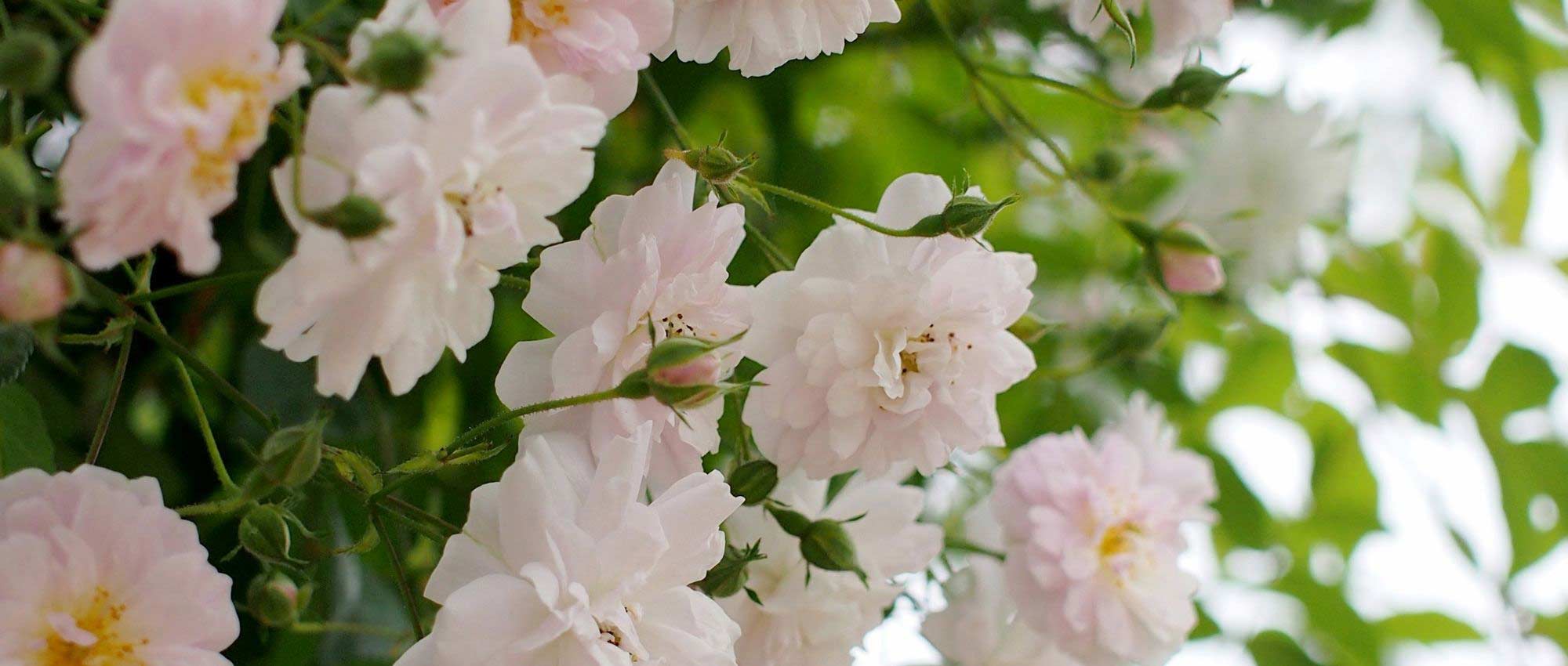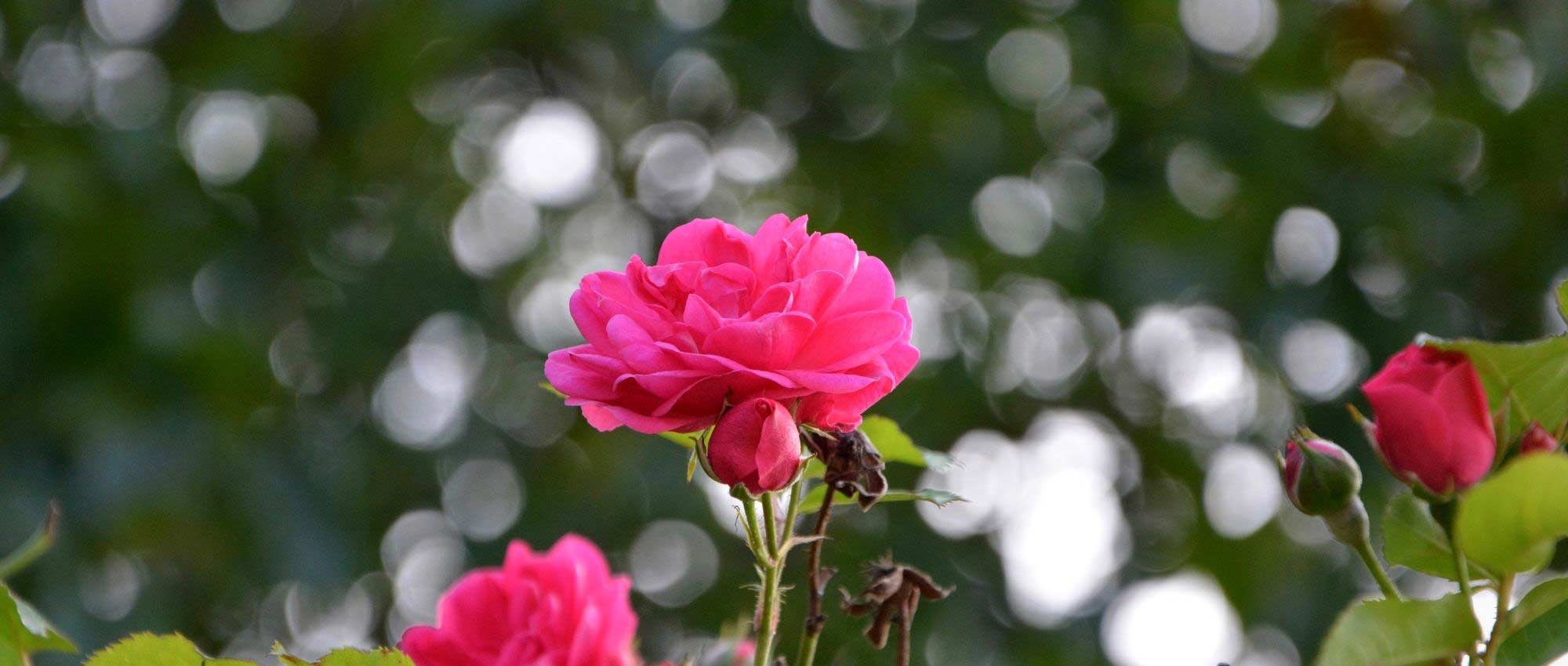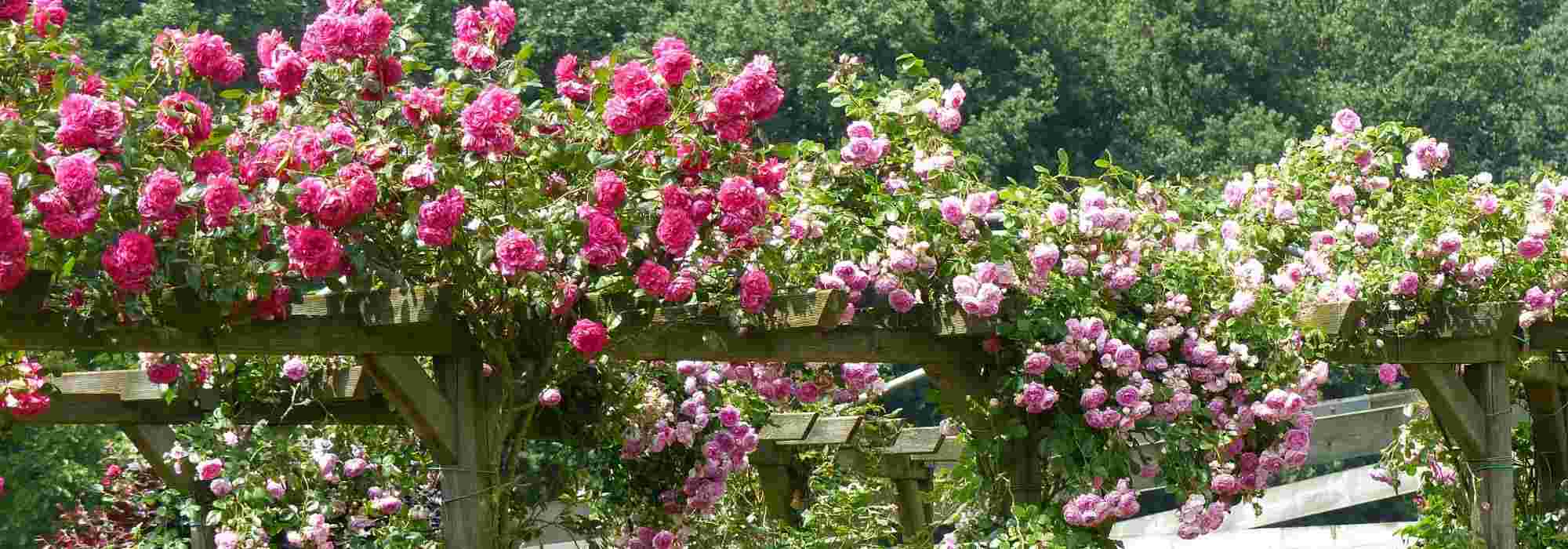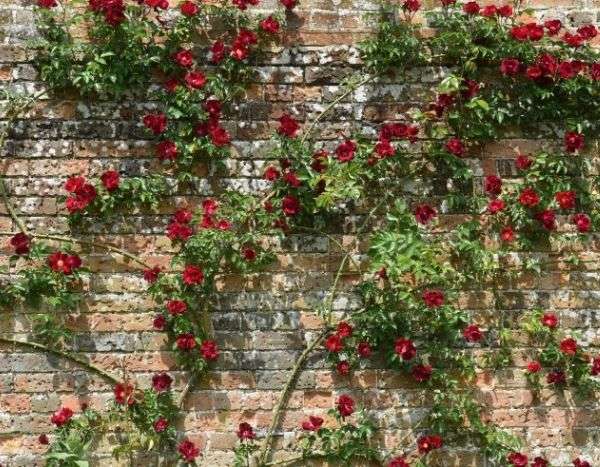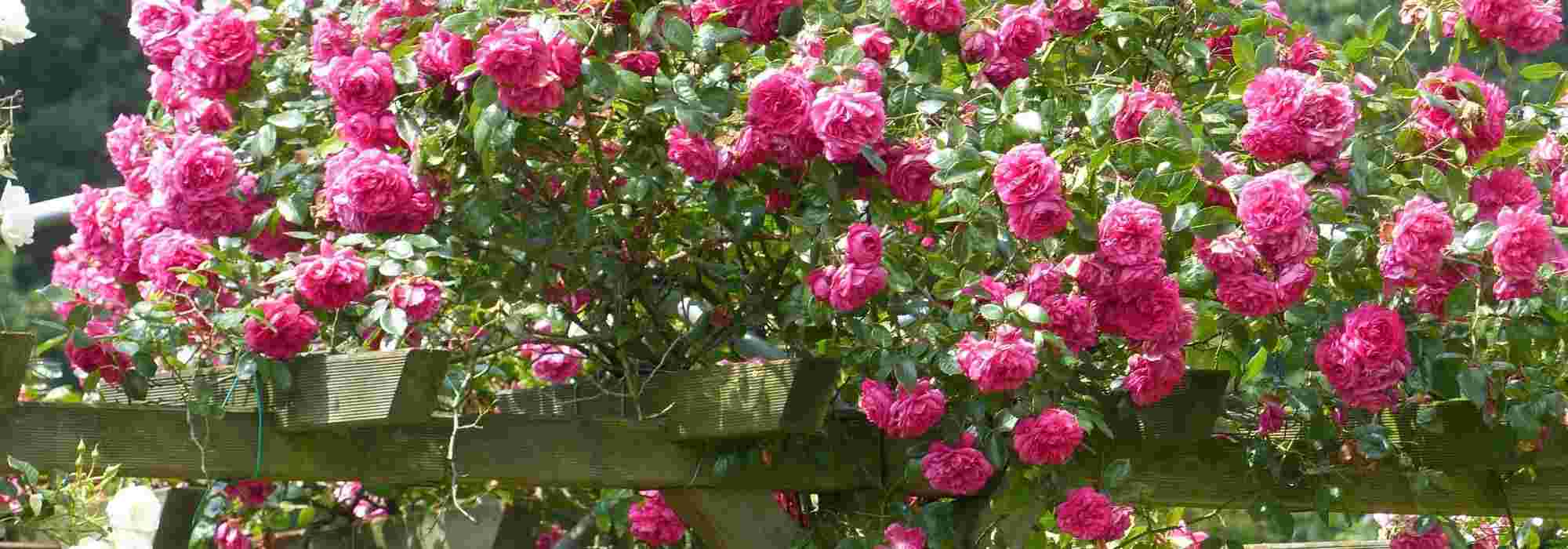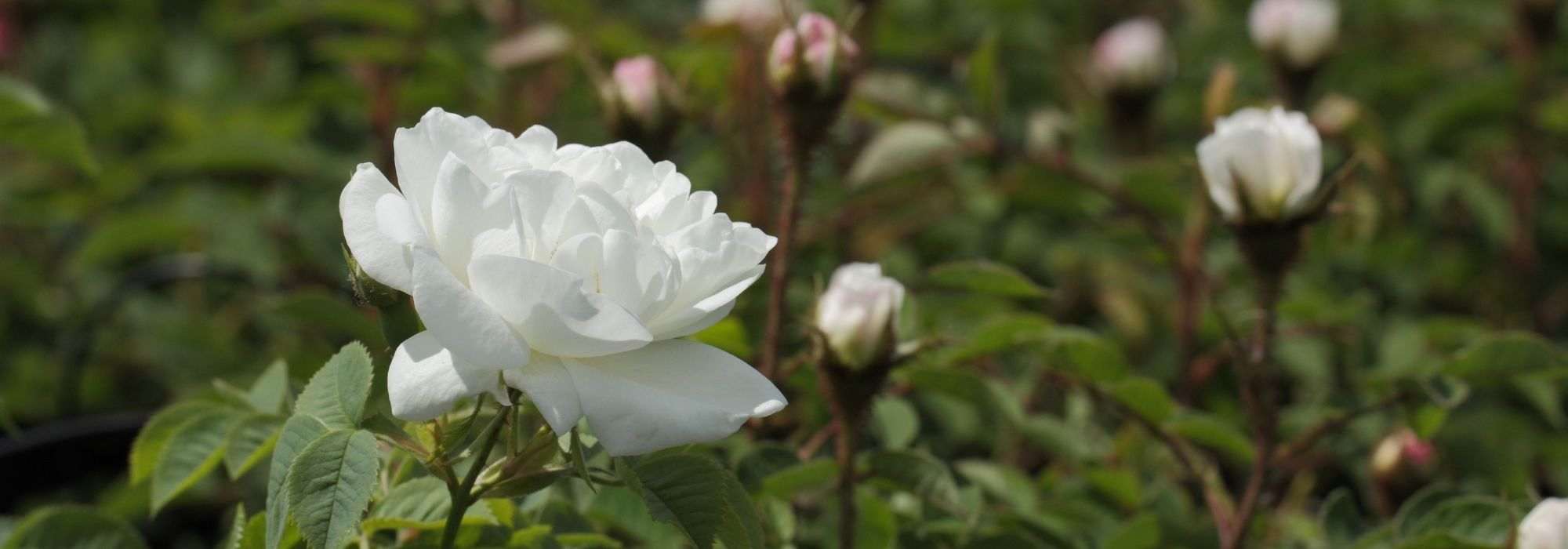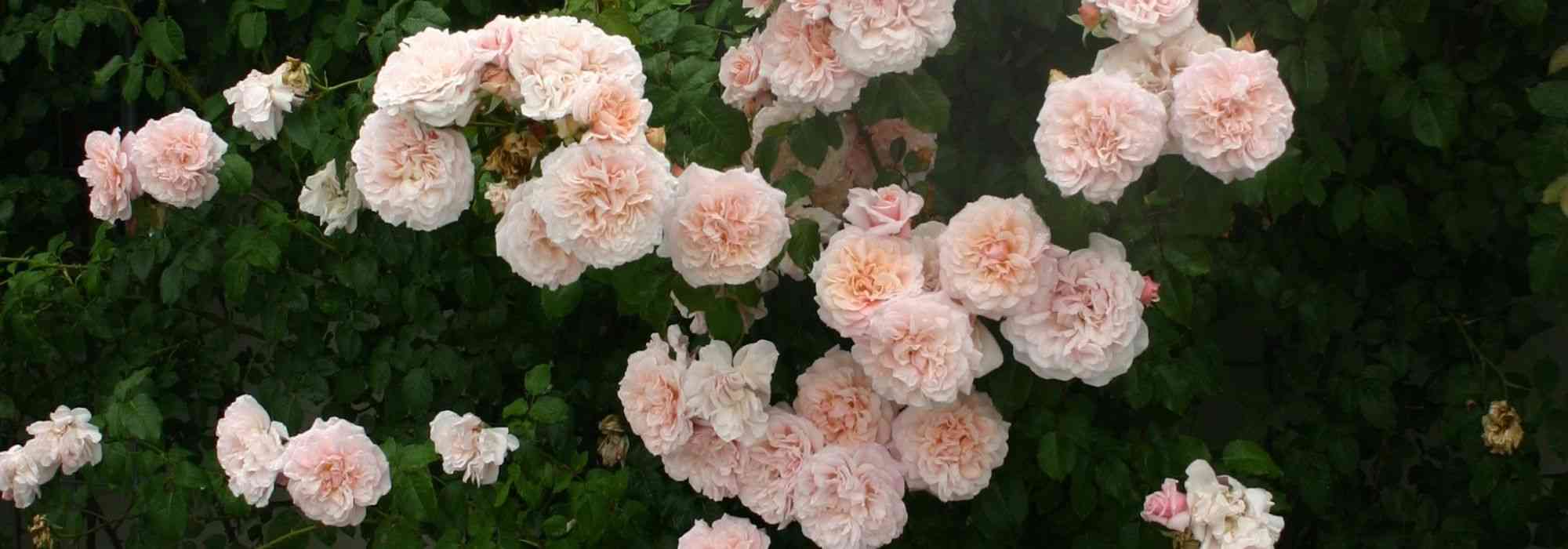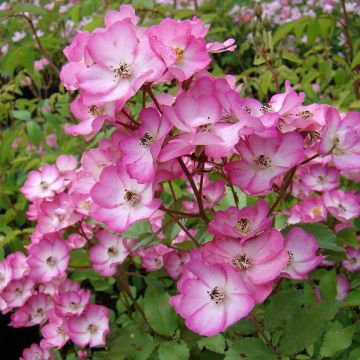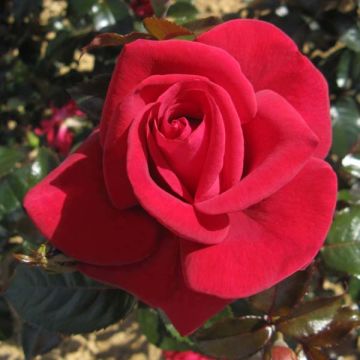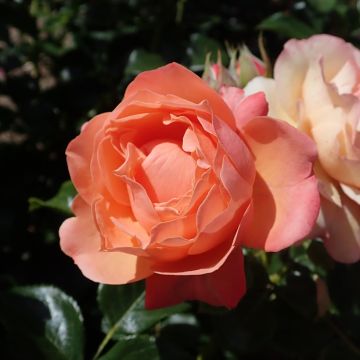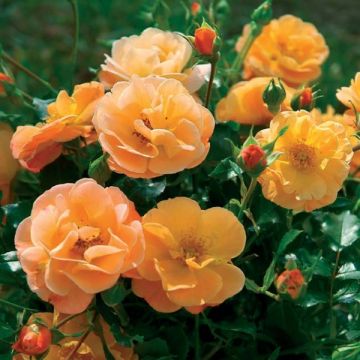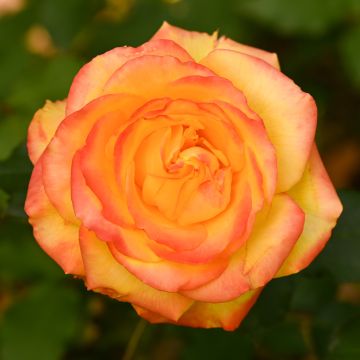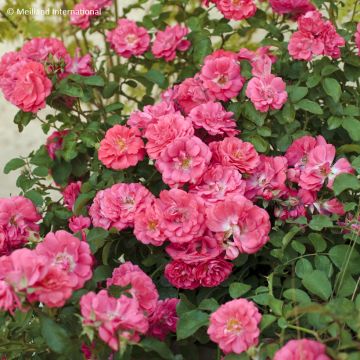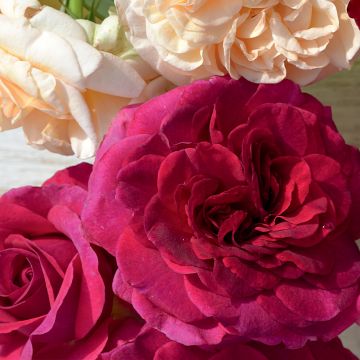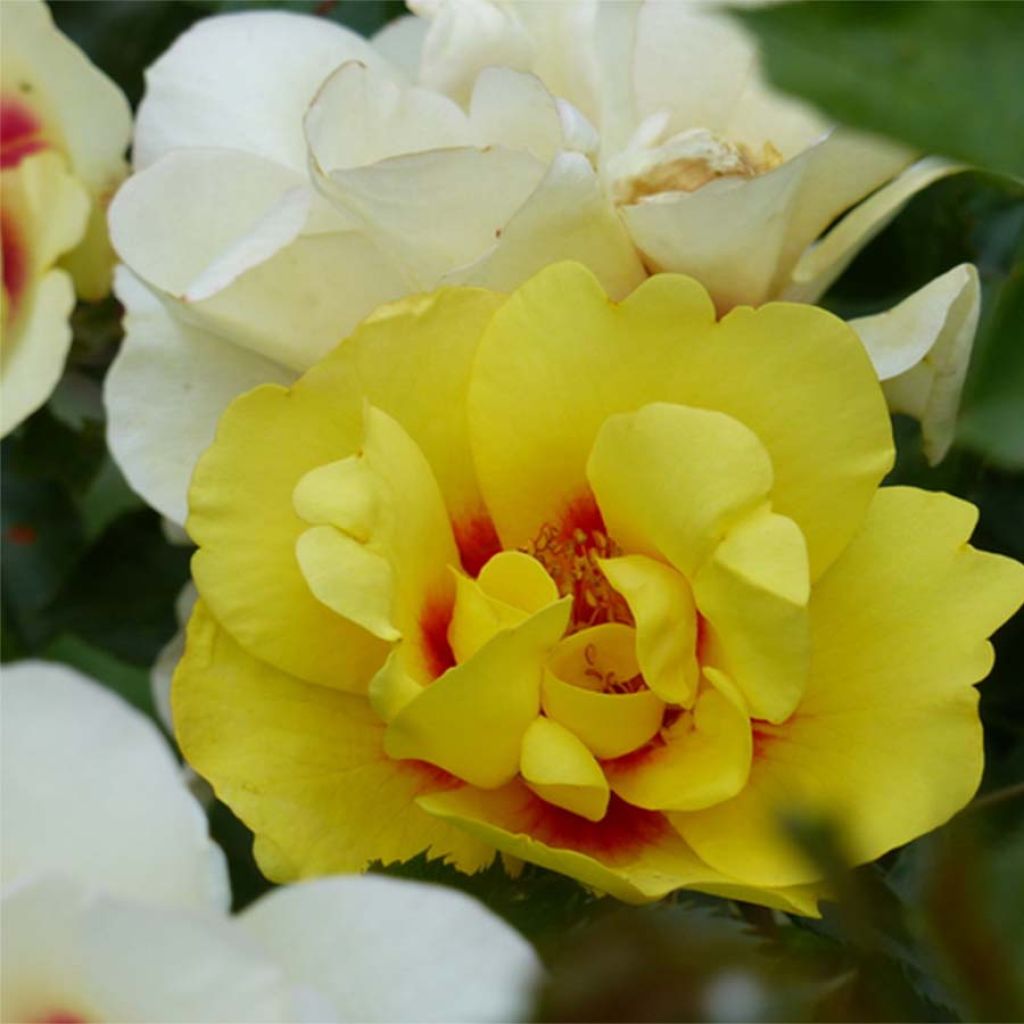

Rosa 'Eyeconic' - Climbing Rose
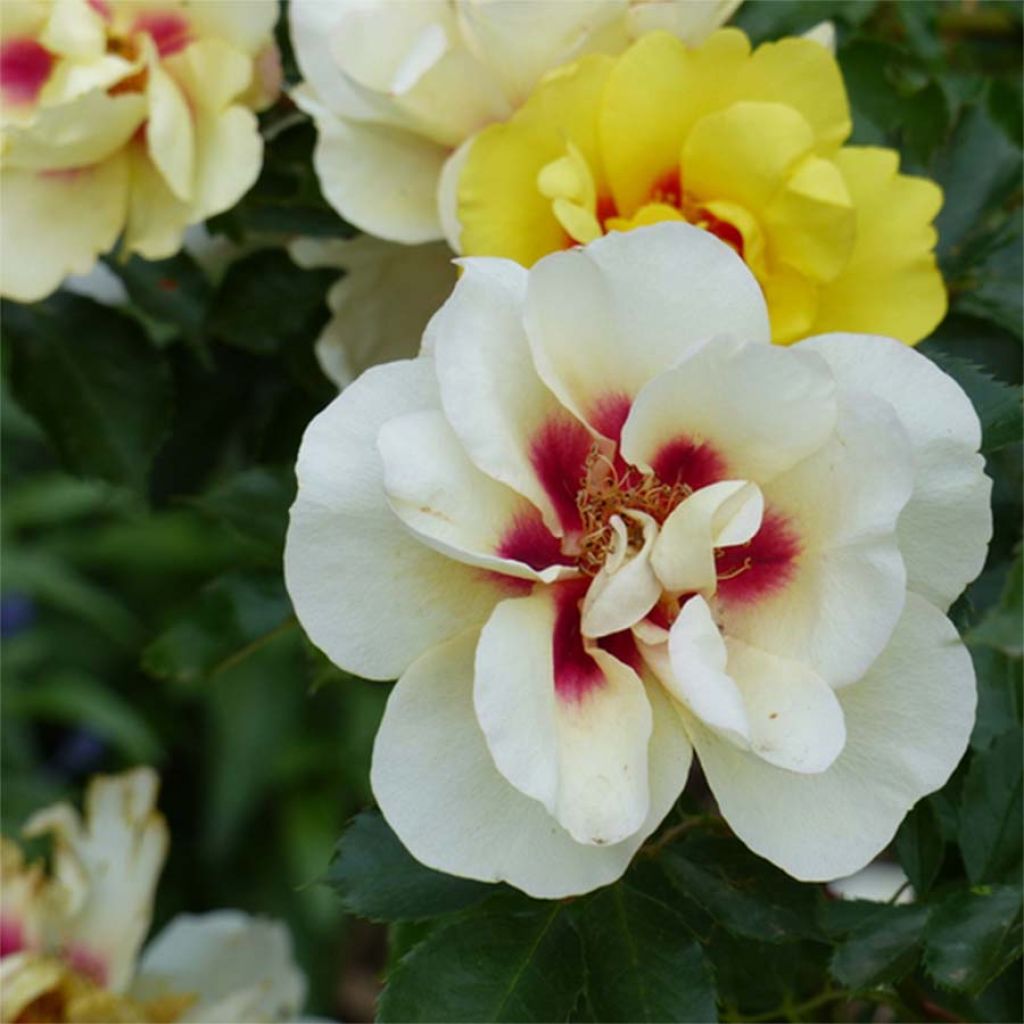

Rosa 'Eyeconic' - Climbing Rose
Rosa 'Eyeconic' - Climbing Rose
Rosa Eyeconic® 'Meipouzmoi'
Meipouzmoi
Thanks to the individuals (for order preparation and shipping), the rose bush I received appears to be healthy. Planted near the 'Comtesse du Barry' variety (also known as 'Golden Border'), I am now patiently waiting for it to take root... or not?
Thierry, 15/02/2024
Special offer!
Receive a €20 voucher for any order over €90 (excluding delivery costs, credit notes, and plastic-free options)!
1- Add your favorite plants to your cart.
2- Once you have reached €90, confirm your order (you can even choose the delivery date!).
3- As soon as your order is shipped, you will receive an email containing your voucher code, valid for 3 months (90 days).
Your voucher is unique and can only be used once, for any order with a minimum value of €20, excluding delivery costs.
Can be combined with other current offers, non-divisible and non-refundable.
Home or relay delivery (depending on size and destination)
Schedule delivery date,
and select date in basket
We guarantee the quality of our plants for a full growing cycle, and will replace at our expense any plant that fails to recover under normal climatic and planting conditions.
Description
The 'Eyeconic' Climbing Rose is a "miniature" variety, not exceeding 1.20m (4ft) in height when planted in the ground, truly extraordinary. Its semi-double, bicoloured flowers, composed of 10 to 12 slightly tousled petals, evoke those of a yellow hibiscus in the arrangement of colours: they are an intense yellow, enhanced in the centre by small, striking vermillion red macules. The colour turns creamy during flowering. The early flowering starts in spring and doesn't stop until the first frost. This rose can also be grown as a bush without support. This rose will give the terrace or balcony a touch of Polynesian atoll!
The climbing Rose 'Eyeconic' (var. Meipouzmoi) is a recent creation by Meilland, introduced in 2014. In these flowers with contrasting central macules, the traits of a dwarf and wild rose named Rosa persica, with yellow flowers and a red heart, can be recognised. A small, woody climbing stem with thorns, it will not exceed 1.20m (4ft) in height and 50-60cm (20-24in) in width when planted in the ground, and 60-70cm (0 and 24in) when grown in pots. Its branches are adorned with abundant, small, dark green foliage with a smooth finish, resistant to diseases, and truly decorative. Its flowering is abundant from May and continues steadily and regularly until the first cold spells. The plant develops small, pointed, elegant buds that open into unusually wide flowers, 8cm (3in) in size. In the shape of slightly closed, slightly wrinkled cups, they display a very warm yellow colour, with each more or less toothed petal marked with a vermillion spot at the base. They are almost devoid of fragrance.
The 'Eyeconic' Rose (Meipouzmoi) is a special rose for a curious garden, which deserves a prime spot. It is also a hardy and undemanding plant, thriving in any ordinary soil without excessive limestone, even dry soil. It will charm enthusiasts of original, exotic-looking, compact and carefree varieties. When trained on a small arch, it forms a true mass of flowers from bottom to top. It can also be left to form a small bush without directing its growth. It will be chosen over others in a Mediterranean garden, on a slope, in a large rockery, wherever many 'classic' roses would shun. It is also sufficiently hardy to withstand our normal winters, which allows it to be adopted almost anywhere. For example, it can be paired with yellow or white foxgloves or pretty grasses like Muhlenbergia capillaris or Stipa capillata. It is also beautiful in front of the mass of tall asters (Aster laevis, Aster turbinellus, Kalimeris mongolica, Solidaster) or surrounded by warm tones like the autumn foliage of deciduous cotinus and euonymus with compact growth.
Rosa 'Eyeconic' - Climbing Rose in pictures
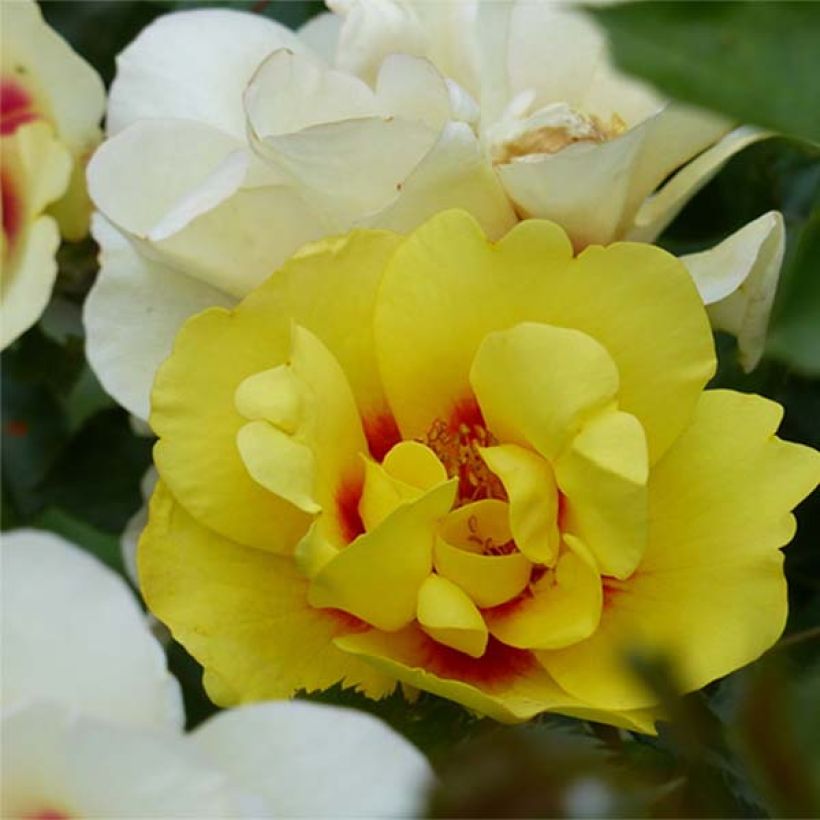

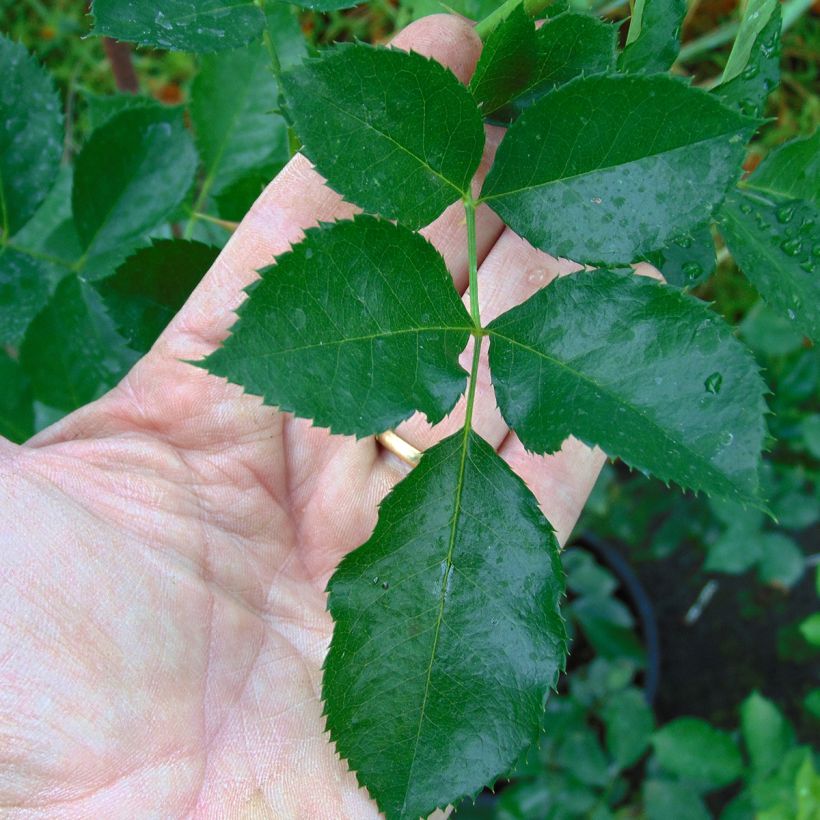

Plant habit
Flowering
Foliage
Botanical data
Rosa
Eyeconic® 'Meipouzmoi'
Rosaceae
Meipouzmoi
Cultivar or hybrid
Rosa canina Laxa (Wrapped bare root, 4L/5L pot)
Planting and care
This variety, probably derived partly from Rosa persica, should tolerate drought better than many more traditional varieties.
Plant your 'Eyeconic' Rose in a rather sunny location. Roses are tolerant but will not like excessive limestone and are more resistant in fertile and well-drained soil. They will adapt to any garden if the soil is well-worked and rich enough. To plant your rose, work the soil by crumbling it well and putting an amendment at the bottom of the planting hole, such as blood, fish and bone. Water generously after planting to remove air pockets. Water regularly for a few weeks to facilitate rooting. At the end of winter, shorten the oldest branches to 3-5 buds above the ground (at the lowest), and choose an outward-facing bud for a more elegant habit. Take advantage of this pruning to remove dead wood and unsightly branches. Prune at an angle above a bud. As the flowering progresses, remove faded flowers, as this stimulates the development of other buds.
If you plant a climbing or rambling rose next to a living tree, the root system of the rose will compete with that of the already established tree. To control watering, here's a tip: plant the rose in a large container with a perforated bottom at the base of the tree. The tree roots will not penetrate the container for at least a year. Remove the container after one year, for example, by cutting one side without disturbing the root system of the rose. The rose will have had time to develop its root system deeply and will be more resistant.
Roses may appear stained or unsightly at the end of summer. However, it is a natural phenomenon that doesn't harm their development.
Planting period
Intended location
Care
Planting & care advice
-
, onOrder confirmed
Reply from on Promesse de fleurs
Similar products
Haven't found what you were looking for?
Hardiness is the lowest winter temperature a plant can endure without suffering serious damage or even dying. However, hardiness is affected by location (a sheltered area, such as a patio), protection (winter cover) and soil type (hardiness is improved by well-drained soil).

Photo Sharing Terms & Conditions
In order to encourage gardeners to interact and share their experiences, Promesse de fleurs offers various media enabling content to be uploaded onto its Site - in particular via the ‘Photo sharing’ module.
The User agrees to refrain from:
- Posting any content that is illegal, prejudicial, insulting, racist, inciteful to hatred, revisionist, contrary to public decency, that infringes on privacy or on the privacy rights of third parties, in particular the publicity rights of persons and goods, intellectual property rights, or the right to privacy.
- Submitting content on behalf of a third party;
- Impersonate the identity of a third party and/or publish any personal information about a third party;
In general, the User undertakes to refrain from any unethical behaviour.
All Content (in particular text, comments, files, images, photos, videos, creative works, etc.), which may be subject to property or intellectual property rights, image or other private rights, shall remain the property of the User, subject to the limited rights granted by the terms of the licence granted by Promesse de fleurs as stated below. Users are at liberty to publish or not to publish such Content on the Site, notably via the ‘Photo Sharing’ facility, and accept that this Content shall be made public and freely accessible, notably on the Internet.
Users further acknowledge, undertake to have ,and guarantee that they hold all necessary rights and permissions to publish such material on the Site, in particular with regard to the legislation in force pertaining to any privacy, property, intellectual property, image, or contractual rights, or rights of any other nature. By publishing such Content on the Site, Users acknowledge accepting full liability as publishers of the Content within the meaning of the law, and grant Promesse de fleurs, free of charge, an inclusive, worldwide licence for the said Content for the entire duration of its publication, including all reproduction, representation, up/downloading, displaying, performing, transmission, and storage rights.
Users also grant permission for their name to be linked to the Content and accept that this link may not always be made available.
By engaging in posting material, Users consent to their Content becoming automatically accessible on the Internet, in particular on other sites and/or blogs and/or web pages of the Promesse de fleurs site, including in particular social pages and the Promesse de fleurs catalogue.
Users may secure the removal of entrusted content free of charge by issuing a simple request via our contact form.
The flowering period indicated on our website applies to countries and regions located in USDA zone 8 (France, the United Kingdom, Ireland, the Netherlands, etc.)
It will vary according to where you live:
- In zones 9 to 10 (Italy, Spain, Greece, etc.), flowering will occur about 2 to 4 weeks earlier.
- In zones 6 to 7 (Germany, Poland, Slovenia, and lower mountainous regions), flowering will be delayed by 2 to 3 weeks.
- In zone 5 (Central Europe, Scandinavia), blooming will be delayed by 3 to 5 weeks.
In temperate climates, pruning of spring-flowering shrubs (forsythia, spireas, etc.) should be done just after flowering.
Pruning of summer-flowering shrubs (Indian Lilac, Perovskia, etc.) can be done in winter or spring.
In cold regions as well as with frost-sensitive plants, avoid pruning too early when severe frosts may still occur.
The planting period indicated on our website applies to countries and regions located in USDA zone 8 (France, United Kingdom, Ireland, Netherlands).
It will vary according to where you live:
- In Mediterranean zones (Marseille, Madrid, Milan, etc.), autumn and winter are the best planting periods.
- In continental zones (Strasbourg, Munich, Vienna, etc.), delay planting by 2 to 3 weeks in spring and bring it forward by 2 to 4 weeks in autumn.
- In mountainous regions (the Alps, Pyrenees, Carpathians, etc.), it is best to plant in late spring (May-June) or late summer (August-September).
The harvesting period indicated on our website applies to countries and regions in USDA zone 8 (France, England, Ireland, the Netherlands).
In colder areas (Scandinavia, Poland, Austria...) fruit and vegetable harvests are likely to be delayed by 3-4 weeks.
In warmer areas (Italy, Spain, Greece, etc.), harvesting will probably take place earlier, depending on weather conditions.
The sowing periods indicated on our website apply to countries and regions within USDA Zone 8 (France, UK, Ireland, Netherlands).
In colder areas (Scandinavia, Poland, Austria...), delay any outdoor sowing by 3-4 weeks, or sow under glass.
In warmer climes (Italy, Spain, Greece, etc.), bring outdoor sowing forward by a few weeks.






























